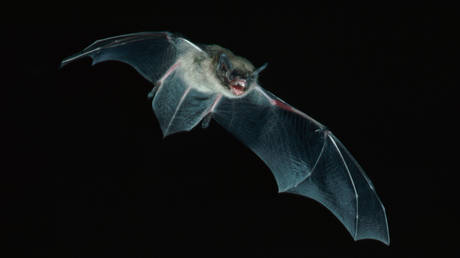NeoCoV is the closest ‘relative’ of the variant that caused deadly outbreaks in 2015
Chinese scientists have discovered that a NeoCoV strain of coronavirus, the closest relative of the Middle East respiratory syndrome coronavirus (MERS-CoV), is capable, subject to mutation, of infecting people and therefore can be considered “a potential bio-safety threat ” to humanity. Saying that, they underlined that the nature of NeoCoV “remains enigmatic .”
Here is what we know at the moment about the mysterious virus.
Where and how was the strain discovered?
The strain itself was known to scientists long before the Covid-19 pandemic, caused by the SARS-CoV-2 strain, started. In 2014, the American Society for Microbiology published research dedicated to the then-emerging MERS-CoV, found in camels and later in hedgehogs. The paper says that the scientists “determined the full genome sequence of a CoV directly from fecal material obtained from a South African Neoromicia capensis bat (NeoCoV) ” – to find out that 85% of the NeoCoV genome was identical to MERS-CoV. They concluded that while two strains belonged to “one viral species ,” MERS-CoV had apparently emerged as a result of NeoCoV mutation, being passed from bats to camels. Several other studies later confirmed that the strains originated from the bats.
How different are NeoCoV and SARS-CoV-2?
A 2020 research paper, published by the National Library of Medicine, indicates that NeoCoV is closer to MERS-CoV than SARS-CoV. The scientists also warned that NeoCoV may appear “in human-related infection.” According to the bombshell preprint, published on Wednesday on the bioRxiv portal, NeoCoV “can efficiently use some types of bat Angiotensin-converting enzyme 2 (ACE2) and, less favorably, human ACE2 for entry. ”
Does NeoCoV pose an imminent threat to humans?
According to the preprint’s authors, most of whom come from the notorious Wuhan university, in order to “efficiently ” infect a human, the strain needs to mutate in a particular way. Currently NeoCoV is spreading only in bats.jumped from humans to mice, rapidly accumulated mutations conducive to infecting that host, then jumped back into humans. ”being a natural reservoir of a wide variety of coronavirus variants ” have, like humans, their own coronaviruses which can transmit and mutate.Mutations can be dangerous if the structure of the spike proteins of the coronavirus can acquire an affinity for human proteins, ” the doctor said.At the moment, there is no talk about the emergence of a new coronavirus, ready to actively spread in the human population. The risks identified by Chinese experts are of a potential nature and require further study ,” Vector’s statement reads, as quoted by RIA Novosti.
How dangerous might NeoCoV be?
The Chinese scientists warned of “a potential bio-safety threat ” of the novel virus “with both high fatality and transmission rate .”Notably, the infection could not be cross-neutralized by antibodies targeting SARS-CoV-2 or MERS-CoV ,” the preprint reads.
What are the scientists’ recommendations?
The authors of the study underline that NeoCoV remains largely unexplored. Other scientists agree that further research is needed, as well as close monitoring of bats and other animals affected by MERS-CoV-related viruses “in order not to miss the moment .”Any infection that arises from nature and passes to humans is a concern, because with such a population density, as in cities in Southeast Asia, in China in particular, in European, American cities, any infection will spread like wildfire, if there is at least some contagiousness for a person, ” Bolibok said.





